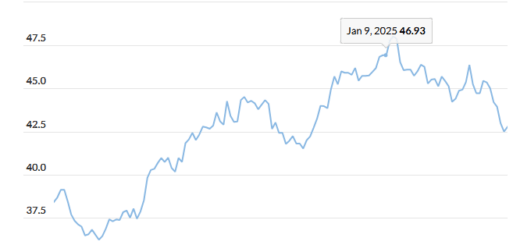Crucial Insights: How the Fed’s Historical Perspective Impacts Stock Market Risks ??
In the face of numerous gloomy forecasts, stocks have shown remarkable resilience this year, steadfastly forging ahead. Even amidst a recent 2% dip, the S&P 500 has surged more than 17% throughout 2023. This upward trajectory has weathered challenges such as surging interest rates, dwindling earnings, the prolonged Ukrainian conflict, and China’s economic struggles – all of which have been unable to disrupt the ongoing rally.
But what could potentially halt this momentum in its tracks?
Numerous strategists and economists are keeping a watchful eye on the Federal Reserve, even as it approaches the conclusion of its cycle of rate hikes. Their concerns are rooted in the widely debated concept of “long and variable lags” associated with rate increases. Essentially, the impact of these rate hikes takes a significant amount of time to permeate the economy and does so unevenly.
In a recent interview with Yahoo Finance, Mohamed El-Erian, the advisor at Allianz and president of Queens’ College, Cambridge University, expressed his apprehensions. While he acknowledges the strength of the U.S. economy, he raised the possibility of a significant policy misstep by the Fed.
“I am particularly concerned that the Fed might tighten monetary policy too aggressively, adhering to an outdated inflation target of 2%. Given the current structural and supply-side dynamics, this target may not be appropriate,” cautioned El-Erian.
El-Erian highlighted a critical flaw in the Fed’s approach – its reliance on backward-looking data for decision-making.
“My primary concern is that headline inflation could surge once again by the end of the year. If the Fed remains excessively reliant on data at that juncture, it could find itself in a precarious situation. It’s imperative that we encourage the Fed to adopt a more long-term perspective, focusing on medium-term inflation targets, and avoid jeopardizing economic growth due to short-term data fluctuations.”
El-Erian’s apprehension about the Fed’s trajectory isn’t unique. Nonetheless, both the markets and the economy have consistently defied expectations throughout the year. Despite having the potential, in theory, to stifle growth, the astonishing surge from zero to 5.5% in slightly over a year has not hindered the upward trajectory.
Jack Manley, the global market strategist at JPMorgan Asset Management, provided insights into historical trends. “When we examine recessions spanning the last six to seven decades, a common thread emerges – an overly zealous Fed,” Manley pointed out. “While I won’t claim that this time is an exception, I’m also not convinced that it’s an inevitable outcome, at least not in the initial half of the upcoming year.”
Currently, investors might not be overly fixated on Fed concerns, possibly due to their attention shifting towards the anticipation of future rate cuts.
In the June summary of economic projections, often referred to as the dot plot, Federal Reserve governors indicated a projection of lower rates by the end of 2024. Market participants are aligned with this perspective, with a majority of futures bets indicating a range of 3.75% to 4.25% by December of the following year.




